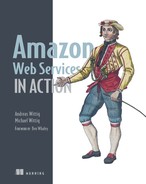Preface
When we started to develop software, we didn’t care about operations. We wrote code, and someone else was responsible for deployment and operations. There was a huge gap between software development and IT operations. On top of that, releasing new features was a huge risk because it was impossible to test all the changes to software and infrastructure manually. Every six months, when new features needed to be deployed, we experienced a nightmare.
Time passed, and we became responsible for a product. Our goal was to iterate quickly and to be able to release new features to the product every week. Our software was responsible for managing money, so the quality of the software and infrastructure was as important as the ability to innovate. But the inflexible on-premises infrastructure and the outdated process of deploying software made that goal impossible to reach. We started to look for a better way.
Our search lead us to Amazon Web Services, which offered us a flexible and reliable way to build and operate our applications. The possibility of automating every part of our infrastructure was fascinating. Step by step, we dove into the different AWS services, from virtual servers to distributed message queues. Being able to outsource tasks like operating a SQL database or terminating HTTPS connections on a load balancer saved us a lot of time. We invested this time in automating testing and operations for our entire infrastructure.
Technical aspects weren’t the only things that changed during this transformation to the cloud. After a while the software architecture changed from a monolithic application to microservices, and the separation between software development and operations disappeared. Instead we built our organization around the core principle of DevOps: you build it, you run it.
Our company became the first bank running on AWS in Germany. We learned a lot about Amazon Web Services, microservices, and DevOps during this journey.
Today we work as consultants, helping our clients to get the most out of AWS. The interesting thing is that most of them aren’t concerned about saving money. Instead, they’re transforming their organizations to benefit from the innovative space that AWS offers to outperform their competitors.
We were completely surprised when we were asked to write a book about AWS in January 2015. But, after experiencing the level of professionalism at Manning Publications during our first phone calls, we became more and more confident. We love reading books as well as teaching and sharing our knowledge, so writing a book seemed to be a perfect fit.
Due to the tremendous support from Manning Publications and our MEAP readers, we were able to finish this book in only nine months. We enjoyed the feedback loop among ourselves, our editors, and MEAP readers. And it was a lot of fun to create and improve all the examples that are part of Amazon Web Services in Action.
